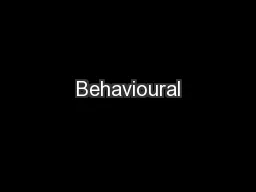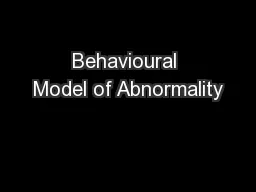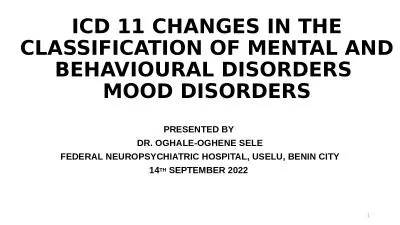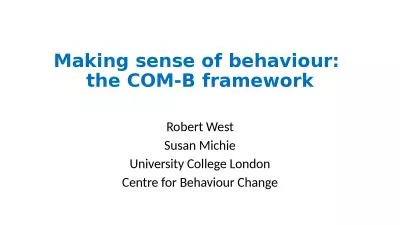PPT-COMMON BEHAVIOURAL AND SOCIAL DISORDERS IN CHILDREN
Author : dennis955 | Published Date : 2024-10-04
BY Mrs AKHILAC MSc CHILD HEALTH NURSING ASSISTANT PROFESSOR JUBILEE MISSION COLLEGE OF NURSING THRISSUR CENTRAL OBJECTIVE At the end of the class students will
Presentation Embed Code
Download Presentation
Download Presentation The PPT/PDF document "COMMON BEHAVIOURAL AND SOCIAL DISORDERS ..." is the property of its rightful owner. Permission is granted to download and print the materials on this website for personal, non-commercial use only, and to display it on your personal computer provided you do not modify the materials and that you retain all copyright notices contained in the materials. By downloading content from our website, you accept the terms of this agreement.
COMMON BEHAVIOURAL AND SOCIAL DISORDERS IN CHILDREN: Transcript
Download Rules Of Document
"COMMON BEHAVIOURAL AND SOCIAL DISORDERS IN CHILDREN"The content belongs to its owner. You may download and print it for personal use, without modification, and keep all copyright notices. By downloading, you agree to these terms.
Related Documents














